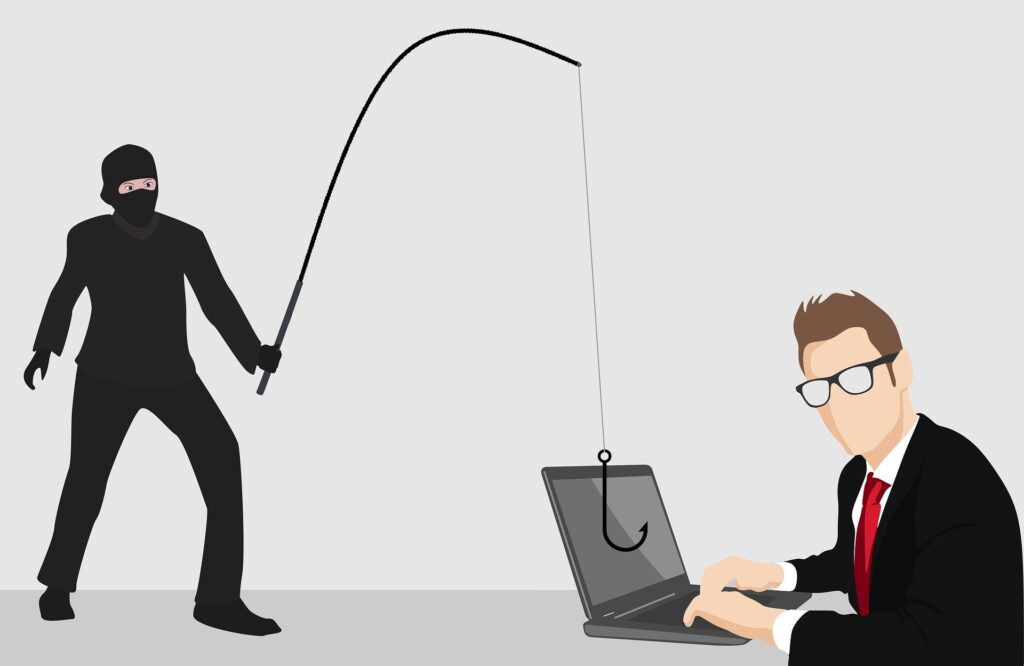CEO Fraud and Fake Invoices hustle has been around since early 2018 and it has gained too much traction over the years. As this scam spoofs emails of well known personalities, people are often overwhelmed and fall for the trap.
Millions of dollars are lost to the crooks running this operation and unfortunately, none of them have been caught yet. If you run a small business or corporation, then you need to pay special attention to this post as it will help you make better decisions. To learn all about this shady trap, continue reading.
If the crooks have already caused financial damage, then reach out to us and we will help you start the recovery process for free. Note that we assist you with everything related to the retrieval of funds and the best part is that all of our services are free.

What is CEO Fraud?
CEO Fraud is somewhat similar to invoice fraud, but the difference is that the scammers impersonate the CEO of well known firms and send fake invoices. Obviously, the kind of activities done by the perpetrators are criminal in nature and they will be put behind bars if they get caught.
As this type of threat is relatively new, every company is not aware about it. On the flip side, the scammers are also too good when it comes to structuring phishing pages and spoofing the email which makes things worse for everyone.
Big firms have a lot of protocols that make them highly resistant to attacks like this one. However, there is no fool proof method to fight this cancer. In other words, keep an open eye and never take things for granted.
How does CEO Fraud and Fake Invoices Scammers function?
Scammers first do research, then impersonate an email account belonging to the victim’s CEO or executive, and utilize their information to construct a personalised, urgent message. The victim gets an email purporting to be from their executive or CEO, clicks the link to read it, and then submits personal information to the phishing site. The con artists will then have access to the victim’s network. Several techniques exist, but this series of events incorporates all of them.
In cases of invoice fraud, current vendor invoices are often intercepted and altered by altering the bank account information. Consequently, the invoice seems valid at first look. The things have been acquired, and the source seems legitimate; but, if payment is made, the funds will be passed to con artists.
Criminals have also been known to email or contact finance departments to alter the bank account information of a supplier for whom they pose as employees in order to get future payments from that source. Any change in your bank account information that is unexpected and unconfirmed is a significant red flag. Never place your trust in a single email or phone exchange without verifying it twice.
Two years were spent by a Lithuanian con artist imitating a third company that did business with Google and Facebook. Prior to reaching the hands of criminals, money from the U.S. corporations was laundered all around the globe.
Get in touch with our affiliated Cryptocurrency Forensic Specialists at CNC Intelligence for free by filling out the form below.
The cash was sent to his bank accounts in Latvia and Cyprus, from where they were dispersed to numerous bank accounts throughout the globe. He fabricated invoices, contracts, letters, and corporate stamps bearing the identities of Google and Facebook employees. Google lost around $23 million, and Facebook lost $100 million.
Safety Tips
Follow the steps covered below to ensure early detection of this type of fraud.
- Discuss CEO fraud with your staff, including its nature and how to recognise the indicators. It is more probable that employees who know what to look for will be notified about these more complex sorts of fraud.
- Use extra caution when distributing information to the wider public.
- Many individuals do not consider the risks associated with updating their social media followers about who is on vacation or future events, but this is an excellent opportunity for scammers. They may more readily organise their assault if they know who is going and when, as well as when the firm is likely to be distracted. This also applies to auto-generated out-of-office responses.
- Use an alternate method of contact to verify the authenticity of any strange payment requests. If the individual is on vacation and you are unable to reach them by email, go to their stored contact on the system and respond to them there.
- As stated earlier, making the task time-sensitive and so pressing the team to make a choice is a frequent tactic. Employers would never criticise employees for double-checking facts prior to executing a significant financial transaction, therefore it is prudent to educate coworkers that thoroughness while handling client monies will result in favourable comments.
- Auditing your accounts on a regular basis to keep track of what’s going where, who authorised payments, and to investigate abnormalities is another proven proactive fraud-prevention method.
Recover money from CEO Fraud and Fake Invoices?
If you have lost money to CEO Fraud and Fake Invoices scams, then you need to act quickly. Call your bank and collect as many details as you can about the transactions. Once you have acquired the data, get in touch with our team via the contact form below.
We will analyze all the details and help you take efficient steps that will help you achieve your end goal in the shortest period of time. All you have to do is, set the ball rolling by leaving us a message.
Conclusion
Frauds, hustles and phishing websites are deadly things that can drain your bank account. To ensure safety of your funds, always be alert and take steps towards educating your employees.
Have you seen any CEO Fraud and Fake Invoices scams in recent times? If yes, leave a comment below.
When you comment, your name, comment, and the timestamp will be public. We also store this data, which may be used for research or content creation in accordance with our Privacy Policy. By commenting, you consent to these terms.
